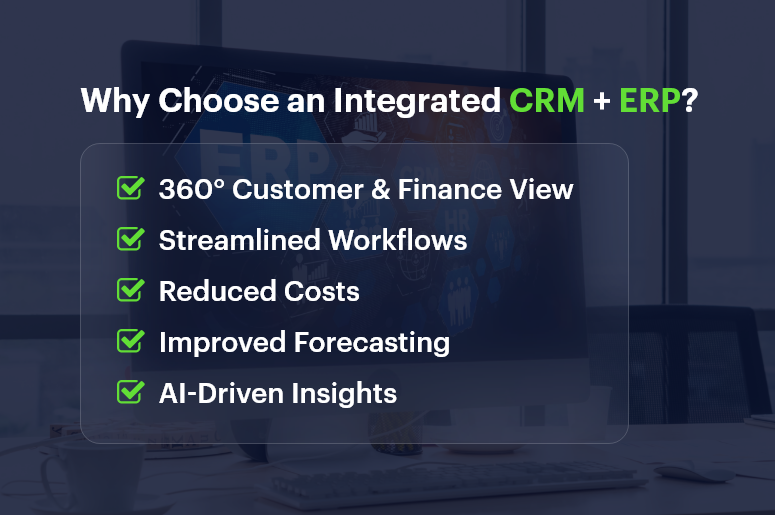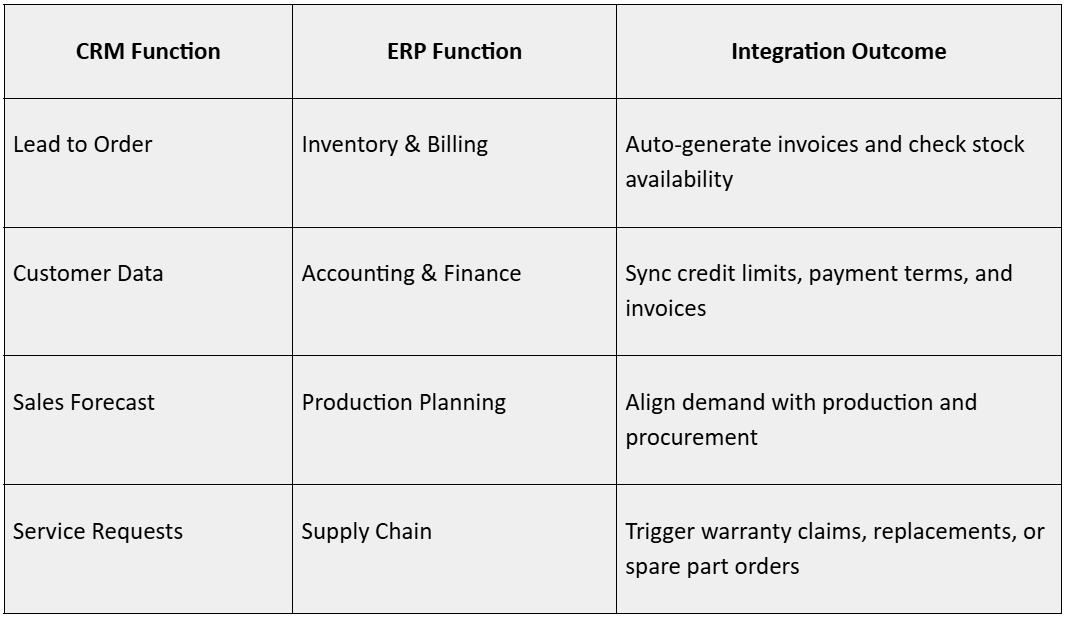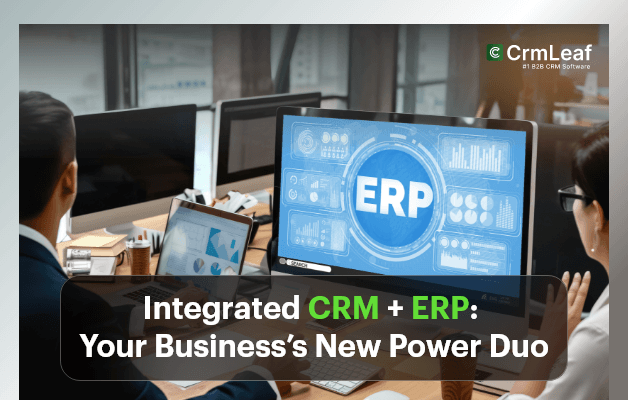In today’s fast-paced digital landscape, data is the new fuel—and disconnected systems are the biggest roadblocks. Most businesses juggle a CRM (Customer Relationship Management) for sales and customers, and an ERP (Enterprise Resource Planning) for finance, inventory, and operations. But what happens when these two worlds merge? An Integrated CRM + ERP system becomes a true power duo—unifying your front-end and back-end operations, bridging gaps between teams, and delivering 360° visibility across the entire business.
What Is an Integrated CRM + ERP System?
An integrated CRM + ERP connects customer-facing processes (like leads, sales, and service) with back-office operations (like accounting, inventory, HR, and logistics). Instead of working in silos, both systems share data in real-time.
For example:
- When a sales order is confirmed in CRM, it automatically triggers invoice creation and stock deduction in ERP.
- When an item is out of stock in ERP, the CRM instantly alerts sales reps to avoid over-committing.
This seamless flow ensures zero manual duplication, faster operations, and better customer experiences.

Why Businesses Are Embracing the CRM-ERP Integration Trend
Organizations today demand speed, accuracy, and insight. Managing isolated tools creates inefficiencies like:
- Duplicate data entries
- Delayed communication between departments
- Inaccurate forecasts
- Missed upsell opportunities
An integrated system breaks these barriers, enabling everyone—from the sales floor to the finance desk—to work from a single source of truth.
Top Benefits of an Integrated CRM + ERP
1. 360° Business Visibility
Gain complete visibility into every customer and transaction. From lead to ledger, every step is traceable—making decisions faster and data-driven.
2. Improved Forecasting
Unified data enables accurate demand forecasting, helping you plan production, procurement, and sales strategies more effectively.
3. Enhanced Collaboration
Sales, support, accounts, and inventory teams collaborate effortlessly. When departments share real-time data, silos disappear.
4. Automated Workflows
No more jumping between platforms. Integrated workflows automatically update orders, invoices, and inventory, saving time and reducing errors.
5. Better Customer Experience
Instant access to customer orders, payment history, and delivery status empowers your team to serve faster and smarter.
6. Reduced Costs
Integration eliminates redundant tools and manual data entry, reducing administrative overhead and operational costs.
How CRM + ERP Integration Works
Integration can be achieved through APIs, middleware, or native connectors between systems.
Here’s how it typically flows:

Modern SaaS platforms like CrmLeaf offer built-in integration modules—ensuring real-time synchronization and minimal IT effort.
Industries That Benefit the Most
While every business can gain from integration, it’s especially powerful for:
- Manufacturing: Aligns production with demand forecasts.
- Retail & eCommerce: Syncs orders, stock, and fulfillment.
- Solar & Construction: Connects site operations, inventory, and billing.
- Service-based businesses: Streamlines invoicing and project tracking.
- Government & NGOs: Ensures compliance, reporting, and transparent fund utilization.
How to Implement an Integrated CRM + ERP
- Define Clear Objectives: Identify pain points—manual data entry, slow approvals, or reporting lags.
- Choose the Right Platform: Pick solutions like CrmLeaf that natively integrate with ERP or support APIs.
- Plan Data Mapping: Align customer, product, and financial fields across both systems.
- Test Workflows: Run pilot integrations for order-to-cash and procure-to-pay cycles.
- Train Teams: Ensure all users understand the integrated workflow.
- Monitor & Optimize: Use analytics to refine processes and improve performance.
Future of CRM + ERP Integration: AI and Predictive Insights
AI-powered integrations are pushing this synergy further. With machine learning and automation, businesses can now:
- Predict customer churn
- Recommend upsell/cross-sell opportunities
- Automate invoice matching and reconciliation
- Forecast material needs or sales demand
- Get real-time alerts for financial or supply chain risks
This means your CRM + ERP doesn’t just record history—it predicts the future.
Key Takeaways
- CRM + ERP integration bridges your business front and back ends.
- It delivers unified data, improved collaboration, and faster decisions.
- With AI, it becomes even smarter—turning insights into instant action.
Conclusion: One System, One Vision
An integrated CRM + ERP is more than a tech upgrade—it’s a strategic transformation. It connects people, processes, and profits into one cohesive ecosystem. Whether you’re managing customer relationships, finances, or compliance, integration ensures every part of your business works in harmony.
If you’re ready to replace silos with synergy, explore how platforms like CrmLeaf ERP can make your business truly connected.
10 FAQs About Integrated CRM + ERP
1. What is the main purpose of integrating CRM and ERP?
To unify sales, finance, and operations under one platform for real-time visibility and efficiency.
2. Does integration require a new system?
Not necessarily. Many CRMs and ERPs can be integrated using APIs or middleware.
3. How does integration improve customer service?
Teams can access order, billing, and service data instantly—reducing response time.
4. Can small businesses benefit from this integration?
Yes, even SMEs gain efficiency and cost savings with integrated workflows.
5. Is CRM + ERP integration cloud-based?
Most modern solutions are cloud-native or hybrid, enabling real-time data sync.
6. How long does integration take?
Depending on system complexity, it can take from a few weeks to a few months.
7. Does it support mobile access?
Yes, leading platforms offer mobile dashboards for CRM and ERP functions.
8. Can I customize workflows?
Absolutely. Integration supports custom fields, triggers, and process automations.
9. How secure is data sharing between CRM and ERP?
Encryption, role-based access, and audit logs ensure enterprise-grade security.
10. What’s the ROI of CRM + ERP integration?
Businesses often see faster invoicing, reduced manual work, and 15–30% productivity gains.


